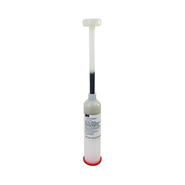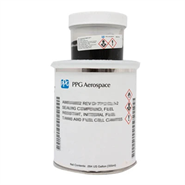Key Features & Information for AMS-S-8802:
Material Composition:
It is typically a two-part, polysulfide-based sealant that cures at room temperature.
The sealant is designed to be flexible, offering durability while also being highly resistant to cracking or degradation when exposed to aircraft fuels and other chemicals.
Fuel and Chemical Resistance:
SAE AMS-S-8802 is renowned for its resistance to fuel, making it ideal for fuel tank sealing.
It also exhibits good resistance to oil, hydraulic fluids, and other common aircraft chemicals.
Flexible Curing Process:
Cures at room temperature and forms a flexible, rubbery seal.
The curing process can be accelerated with heat if desired, which can be useful in manufacturing or repair settings that require faster turnaround times.
Applications:
Used primarily in the aerospace industry for fuel tank and fuselage sealing.
Commonly used for sealing areas that require flexible bonds due to vibration, thermal expansion, and contraction.
Also used in applications that demand a high level of chemical and environmental resistance, such as in seams and joints in airframes.
Dash numbers:
In the context of sealants, "dash numbers" (often written as "-numbers") refer to the minimum application time in hours for classes A and B and assembly time in hours for class C. They help manufacturers, technicians and engineers select the exact type of sealant that matches the application requirements.
For example, Type 1, class A-2 = a dichromate cured, brushable material having an application time of 2 hours
Compliance:
This specification is used widely in military and commercial aerospace applications due to its reliability and adherence to stringent aviation standards. Because AMS-S-8802 is a legacy specification adapted from MIL-S-8802, it’s also compliant with certain defence and military requirements for airworthiness.




